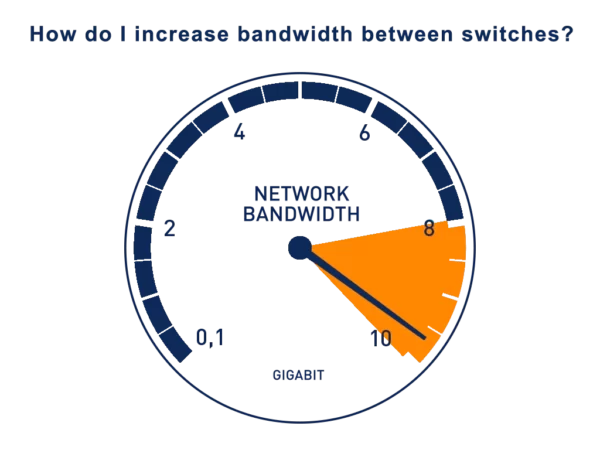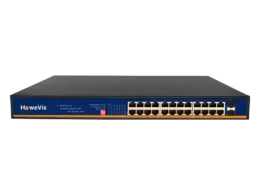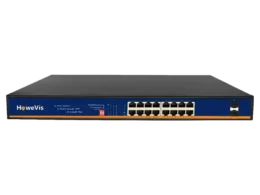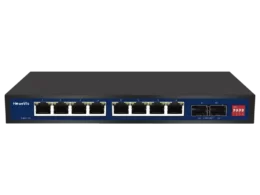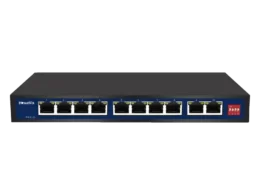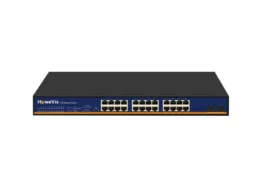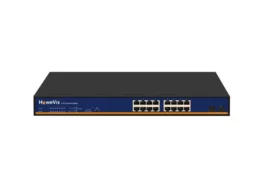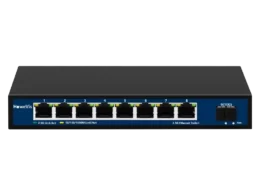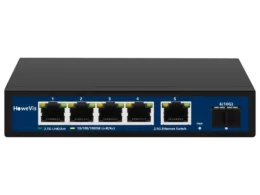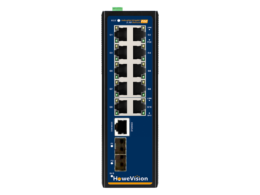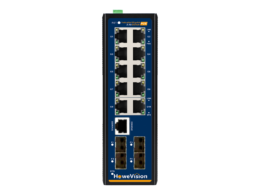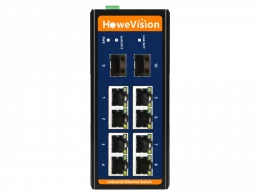There are numerous ways to overcome traffic issues and reach higher levels of bandwidth.
These methods might include:
- Employ dynamic routing features in your switch
- Maximize the data packet transfer
- Use the necessary power and data to minimize the losses.
Using these fundamental methods, you can achieve QoS (Quality of service) and high-performance networks. Let’s describe bandwidth and ways to increase it.
What is Network Bandwidth?
Bandwidth is a buzzword with a profound technical aspect. When we iterate bandwidth, it doesn’t mean data network speed. It is the volume of data transmitted over the given data connection.
So, how exactly can we define the bandwidth?
Bandwidth is the maximum capacity of a network or switch to carry a given volume of information and transfer it at a given data speed.
From the definition, we get the word Capacity, not speed. We measure it in the networking technology’s kilobits, megabits, and gigabits.
Suggested Reading: How to Choose the Bandwidth of the PoE Switch?
How does bandwidth work?
In web hosting services, if you observe closely, you can check — A hosting package has 10GB or unlimited bandwidth.
Exploring this representation, we can expect the working mechanism of bandwidth as below.
- Bandwidth modifies the network performance and upgrades it as you increase the bandwidth.
- The higher the bandwidth, the more network support you can procure.
- In short, it is the backbone of network performance and sustains network traffic over a given WAN, LAN, etc.
5 Methods for Measuring the BandWidth
Multiple strategies are available to list the bandwidth features and measure it in kilobits, megabits, etc.
Here are different methods:
Test TCP utility (TTCP)
TCP refers to total control transmission, an internet protocol that measures speeds and bandwidth.
This technique involves two devices: the host or sender and the receiver. The sender sends the file and measures the network’s throughput, while the receiver receives the file and shows the volume of bytes transferred.
To evaluate the bandwidth, we measure two factors:
- Bytes of the file
- Time taken
PRTG Network Monitor
Unlike TTCP, the PRTG network monitor provides graphical analysis and charts for packet overhead, the number of bytes transferred, and the time spent.
To calculate the bandwidth, the total multicast traffic of the network is scaled through the computers connected to the LAN or WAN. Overall bandwidth is calculated by dividing the total amount of traffic by time.
Bandwidth= Amount of traffic/Time
File Transfer Method
In this method, we must determine the file size in kilobytes and megabytes. The network operator sends the files and determines the rate by dividing the file size by the time taken for the transfer.
Bandwidth= File Size/Time
Total Transfer Method
This method counts and transfers the total number of files with multiple devices connected to the switches over the given period.
The calculation formula is the sum of all the file sizes divided by total time. It helps get bandwidth in bits.
Bandwidth=, All the files size, transferred/ Total time taken for transfer
95th percentile method
There are sudden spikes in power and the internet in the network. Due to many factors, measuring the actual bandwidth is a bit hard.
Therefore, many carriers use the 95th percentile method. Through this technique, they subtract 5 percent from the total bandwidth derived through the formula to remove the spikes. To some extent, you get accurate measurements of bandwidth used for other devices.
Bandwidth= Total Bandwidth measured – 5%
There are different switches in a network, such as Gigabit Switches and unmanaged switches. More bandwidth ensures higher network performance.
3 Fundamental Quantities differentiation from the bandwidth
Whenever you employ WiFi in your home, many quantities come into consideration. For example, the data speed is quite different from the network bandwidth. People get confused between such things.
So, we need to distinguish the bandwidth from the following quantities.
Bandwidth Vs. Speed
Remember one thing. Bandwidth and speed are pretty different entities.
Bandwidth is the volume of information, while speed refers to how fast you can transfer that volume of data.
Let’s understand the concepts of bandwidth and data speed in practical life.
Suppose you transfer a 4K video of 10 Gigabytes from one computer to another computer connected over the network. The file size is transmitted per second in bandwidth, while speed is how fast the files get transferred.
Bandwidth Vs. Latency
Latency is a pretty different quantity compared to latency.
Latency refers to a delay in the loading of the data. For example, if you load a website, the time it takes for the complete loading is latency. The volume of data loaded in this case is bandwidth. I believe you can clearly understand the difference through this instance.
In network congestion scenarios, latency is higher than expected due to delayed packets.
Bandwidth Vs. Throughput
Bandwidth is pretty similar to throughput. So, I can guess there is confusion between these two terms.
Throughput is the volume of information from the host device to the recipient device in the given networks. In other cases, the bandwidth is the maximum amount of data sent.
Let’s assume an example of Fast Ethernet.
The throughput in Fast Ethernet technology is 94 Mbps, while the bandwidth is 100 Mbps if you have a 100 Mbps maximum speed in your Fast Ethernet networks. Increasing throughput doesn’t mean bandwidth is higher.
5 Methods to Boost Network Bandwidth between the Switches
There are many ways to overcome network problems and improve your traffic performance. Here are these methods.
Method 1: Segregate your network Traffic
Traffic overloads occur in networks with multiple devices connected in a single domain. Since a single link aggregation can work better, you must reduce or segment your traffic with VLANs or WAN networks.
A flat network sends all the traffic in the single broadcast domain, increasing the switch links’ bottlenecks. We can implement VLAN Network features to keep the collision rate below 10 percent.
Layer 2 and layer 3 Gigabit switches are perfect solutions for this case. These switches offer:
- Internet Protocols are dedicated to the new equipment, such as VOIP or IP cameras.
- Dynamic VLAN procures the MAC address of devices and assigns the switch ports to VLANs.
- Multicast VLAN registration provides a dedicated VLAN to multicast traffic, reducing the potential number of bottlenecks in the networks.
Method 2: Provide the Essential Power and Bandwidth
Two main factors are important when you employ an Ethernet switch in your network. One is processing power, while the other is bandwidth.
To optimize the traffic, you must provide the necessary power and bandwidth to support it. It will reduce power wastage. In this respect, you can do the following:
- Employ a fast engine that causes zero loss of data packets. Usually, wire-speed silicon chips provide non-blocking features, leading to a smooth transfer of data packets without even a single loss.
- Link Aggregation Control Protocol (LACP) increases the total bandwidth through multiple ports and can provide details. It enhances the number of data packets instead of data speed.
- Upgrade the technology. If you are using Fast Ethernet in your LAN, it is time to upgrade to Gigabit Ethernet. Gigabit has a higher bandwidth; you can even replace it with 10 Gigabit Ethernet.
- Integrate your switches and let them get the best answers to your bandwidth questions.
Method 3: Employ Routing Functionalities in Switch
A router is a tool that can improve the network’s bandwidth and support higher performance. In WiFi, you can observe the role of Modems and routers in supporting the internet speed.
Instead of overloading the router, you should focus on the structure of the switches. I prefer layer 3 switches that maintain the networks and equip inter-VLAN traffic. Offloading the router will deal with the WAN connectivity and firewall functions forward by improving overall performance.
In layer three switches, it is better to enhance the performance by:
- Static IP routing
- Dynamic IP routing
These options will contribute to bandwidth and network performance.
Method 4: Application Preferences and Traffic Shaping
Application preferences and shaping can control hindrances in traffic pathways to a greater extent. You must access the switches and do the following activities to manage applications.
- Layer 2 switching capability: Use 802.1p/q tag to prioritize the applications
- Layer 3 switching capability: Utilize IP header (differentiated services code point (DSCP)/type of service (ToS) to prioritize the applications.
- Bandwidth Throttling: Do traffic shaping to delay packets through rate limitations or Bandwidth throttling.
Suggested Reading: Is my switch layer 2 or 3?
Method 5: Automatic Setup of Endpoint Parameters
To enhance the speed and bandwidth, set up the endpoint port channels with parameters like:
- Quality of Service(QoS)
- Storm Control
- Number of devices allowed
- VLANs
Smart ports can automatically set up these endpoint parameters and employ Macros for automated configuration. This allows new devices like IP cameras and phones to be configured automatically and quickly.
EndNote:
Bandwidth is a critical parameter when you check out network performance. To establish a network effectively, keep a weather eye on the bandwidth. You can implement different techniques to boost your bandwidth.
Check out the HoweVision Professional for equipment related to Layer Switches, Gigabit switches, and PoE switches.
